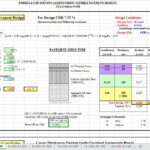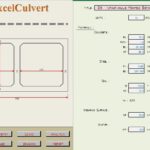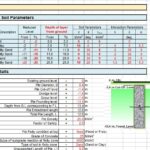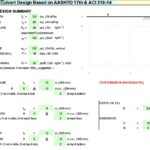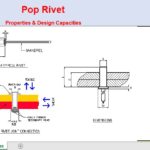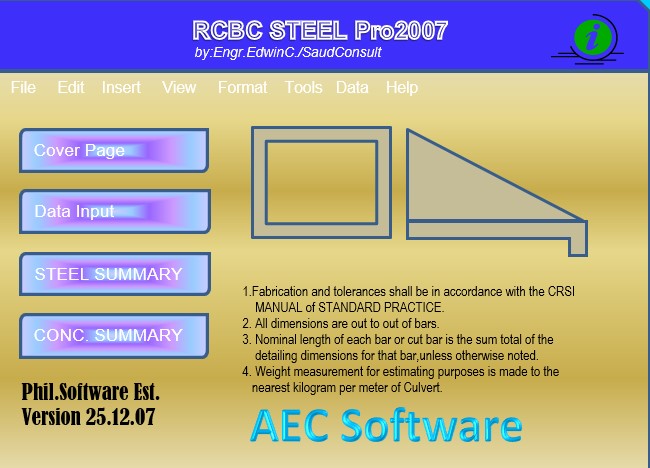
Reinforced Concrete Box Culvert Calculation Spreadsheet
28 January 2025Table of Contents
Reinforced Concrete Box Culvert Calculation Spreadsheet
Concrete culvert boxes play a crucial role in modern infrastructure. They are an essential component for managing water flow, ensuring structural stability, and maintaining the safety of roads, railways, and other critical pathways. Whether you’re a civil engineer, contractor, or someone interested in construction, understanding concrete culvert boxes can help you appreciate their significance. In this article, we will cover everything you need to know about concrete culvert boxes, their benefits, and their applications.
What Is a Concrete Culvert Box?
A concrete culvert box is a precast or cast-in-place structure designed to allow water to flow under a road, railway, embankment, or other obstruction. Unlike traditional pipes, culvert boxes are rectangular or square in shape, which allows them to handle larger volumes of water and accommodate specific design needs.
Key Features of Concrete Culvert Boxes
- Durability: Made from reinforced concrete, culvert boxes are highly resistant to wear and tear, environmental factors, and heavy loads.
- Customizability: They can be designed to meet specific dimensions and load requirements for a wide range of projects.
- Ease of Installation: Precast concrete culvert boxes are manufactured off-site, reducing installation time and labor costs.
- Low Maintenance: Their robust construction ensures minimal maintenance over their long lifespan.
Benefits of Concrete Culvert Boxes
1. Effective Water Management
Concrete culvert boxes are excellent for directing water flow, preventing flooding, and ensuring the structural integrity of roads and embankments.
2. High Load-Bearing Capacity
Thanks to their reinforced structure, concrete culvert boxes can support heavy loads, making them suitable for highways, railways, and industrial sites.
3. Environmentally Friendly
Precast concrete is sustainable and has a lower carbon footprint compared to other materials. Additionally, culvert boxes can be designed to minimize environmental impact by allowing aquatic wildlife to pass through.
4. Cost-Effective
While the initial investment might seem high, the durability and low maintenance needs of concrete culvert boxes make them a cost-effective choice in the long run.
Common Applications of Concrete Culvert Boxes
Concrete culvert boxes are versatile and used in various sectors, including:
1. Roadways and Highways
Culvert boxes are commonly installed under roads to manage water drainage and prevent erosion.
2. Railway Projects
They ensure water flow under railway tracks while providing the necessary support for trains.
3. Stormwater Management
Concrete culvert boxes play a critical role in stormwater systems, helping to prevent flooding in urban areas.
4. Bridges and Tunnels
They serve as foundational components for small bridges and tunnels, ensuring stability and efficient water management.
5. Agricultural and Rural Development
In rural areas, culvert boxes are used to direct irrigation water and improve access across fields and streams.
Precast vs. Cast-In-Place Culvert Boxes
Precast Concrete Culvert Boxes
- Advantages: Faster installation, consistent quality, and less site disruption.
- Disadvantages: Limited flexibility in design changes once manufactured.
Cast-In-Place Concrete Culvert Boxes
- Advantages: Greater flexibility for custom designs and on-site adjustments.
- Disadvantages: Longer installation time and potentially higher labor costs.
Installation Process
Installing a concrete culvert box involves several steps:
- Site Preparation: Excavate the area and ensure a stable foundation.
- Placement: Position the culvert box using cranes or other heavy machinery.
- Backfilling: Add backfill material around the culvert to secure it in place.
- Finishing: Seal joints and ensure proper alignment for optimal performance.
Choosing the Right Concrete Culvert Box for Your Project
When selecting a concrete culvert box, consider the following factors:
- Load Requirements: Assess the weight and traffic load the culvert will need to support.
- Water Flow Capacity: Ensure the culvert box can handle the expected volume of water.
- Environmental Impact: Opt for designs that minimize disruption to local ecosystems.
- Budget: Balance initial costs with long-term benefits.
Maintenance Tips for Concrete Culvert Boxes
While concrete culvert boxes are low-maintenance, periodic inspections can extend their lifespan:
- Remove debris that may block water flow.
- Inspect for cracks or structural damage.
- Ensure proper drainage to prevent waterlogging.

